I need to have an observable list of a type that will be displayed in a TableView with one single column, that when selected will display the rest of its information on the right. The TableView is wrapped in a TitledPane, which is wrapped in an Accordion. See image below:

As you can see in this scenario I don't want to show the Column Header.
I tried following the instruction here, which leads to here:
Pane header = (Pane) list.lookup("TableHeaderRow");
header.setMaxHeight(0);
header.setMinHeight(0);
header.setPrefHeight(0);
header.setVisible(false);
However, it appears to not be working for JavaFX 8. The lookup("TableHeaderRow") method returns null which makes me think that the "TableHeaderRow" selector no longer exist.
Is there an updated workaround for removing/hiding the table header in JavaFX 8?